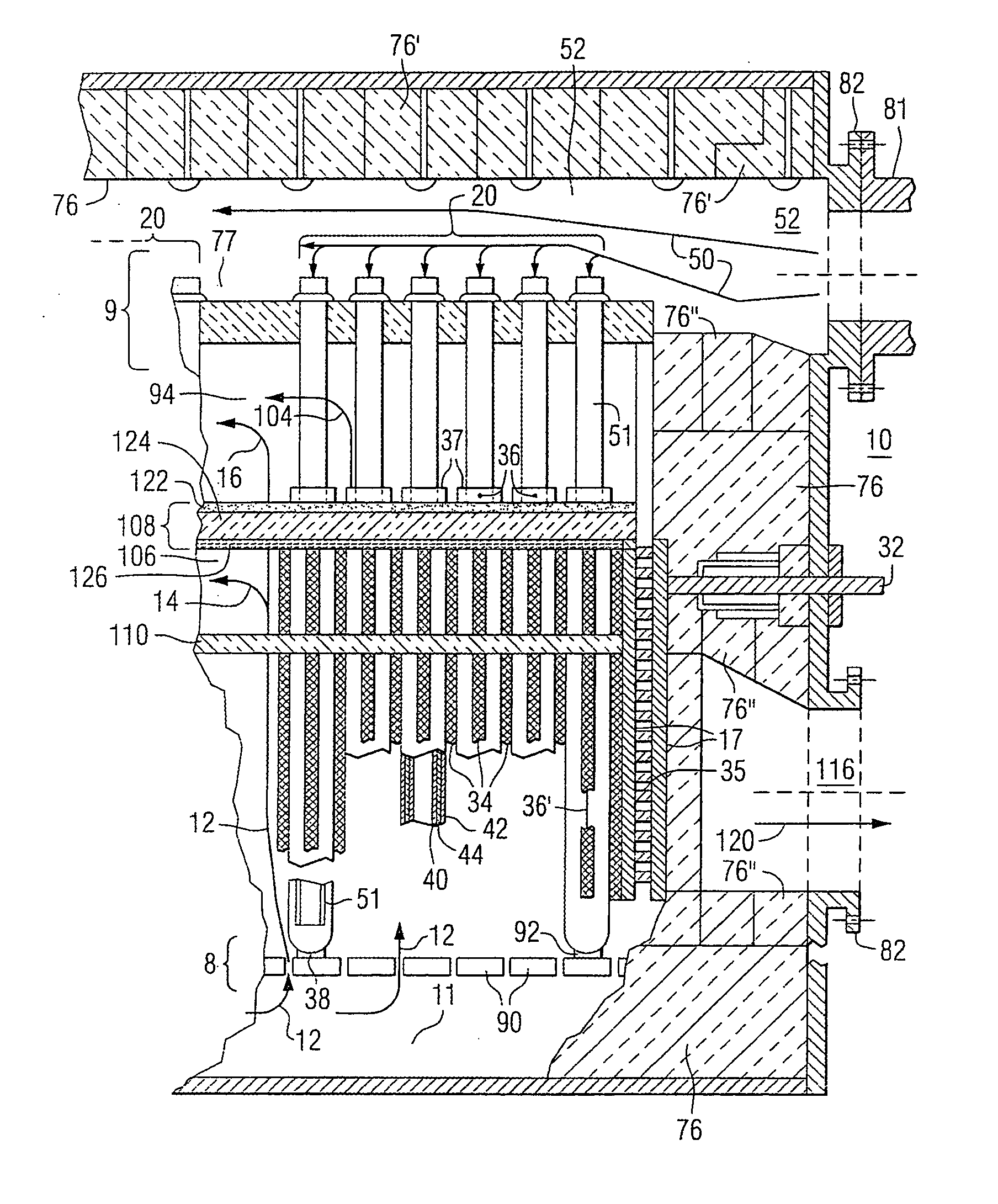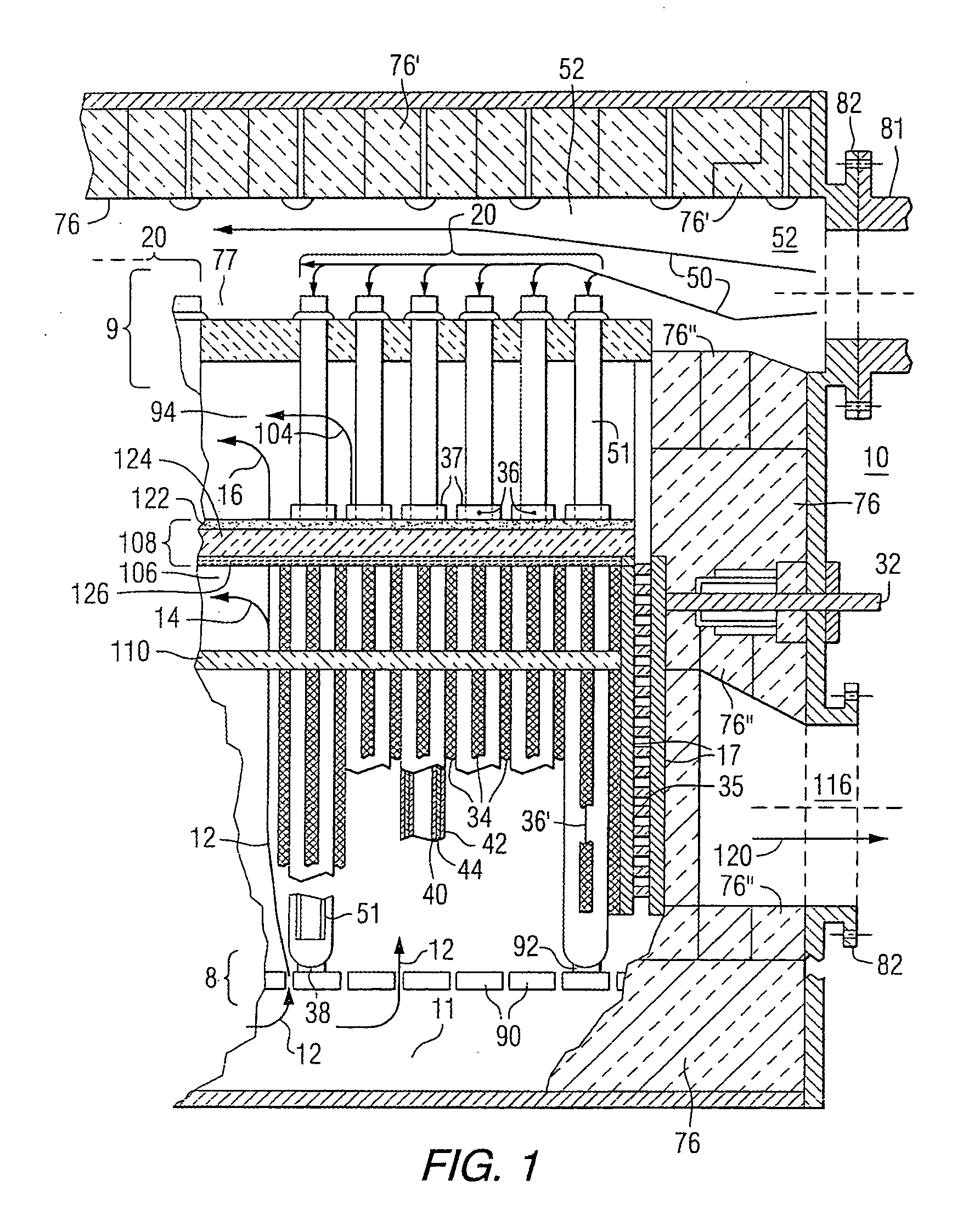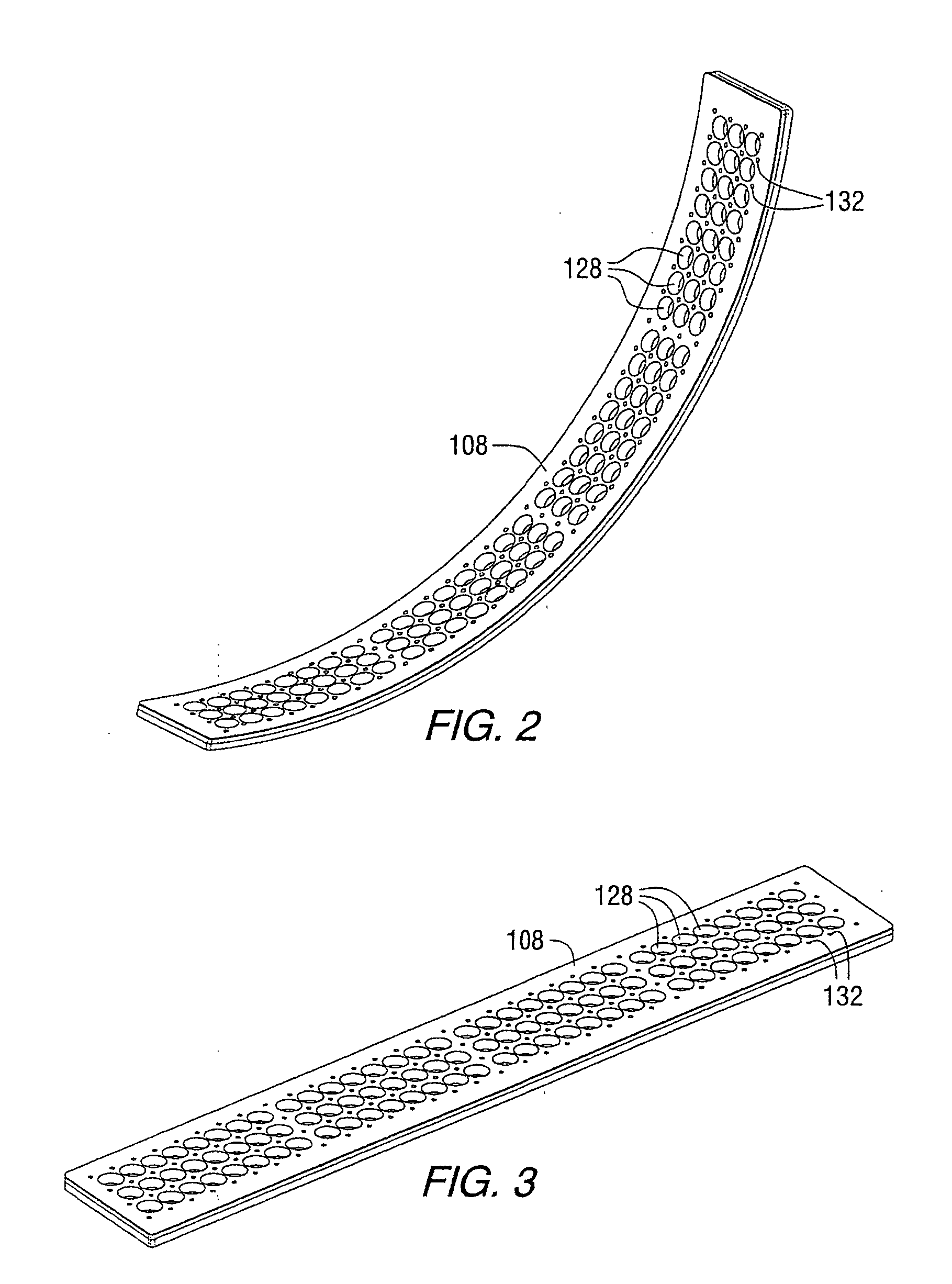Flexible ceramic gasket for SOFC generator
a ceramic gasket and generator technology, applied in the field of composite positioning gaskets, can solve the problems of not solving the problem completely, increasing costs, and reducing the open end of the fuel cell located in the combustion chamber, and achieve the effect of effective absorption of mechanical and thermal loads and low cost production
- Summary
- Abstract
- Description
- Claims
- Application Information
AI Technical Summary
Benefits of technology
Problems solved by technology
Method used
Image
Examples
example
[0032] Prototypes of two potential gasket positioning board styles with square-pitched 3×8 hole arrays were made. The first was a pillow type gasket, with undersized holes for the cells punched out, then sewn with high-temperature ceramic thread to consolidate the gasket composite and prevent unraveling. The second was a quilted gasket, with cell holes cut using a laser. Both would be useful and accomplish all objectives of the invention, especially when the top would be impregnated with catalytic nickel oxide. To control pressure drop through the gasket, a number of parameters can be varied to optimize the consistency and the porosity of the matrix. Gas permeability can be controlled by using low-density ceramic fiber blankets or medium density papers or felts. The preferred method of fabrication consists in stitching a 3×8 hole pattern by the continuous intertwining of thin ceramic thread through the gasket thickness, relying on the uniformity of the gasket permeability rather tha...
PUM
| Property | Measurement | Unit |
|---|---|---|
| temperatures | aaaaa | aaaaa |
| temperatures | aaaaa | aaaaa |
| temperatures | aaaaa | aaaaa |
Abstract
Description
Claims
Application Information
 Login to View More
Login to View More - R&D
- Intellectual Property
- Life Sciences
- Materials
- Tech Scout
- Unparalleled Data Quality
- Higher Quality Content
- 60% Fewer Hallucinations
Browse by: Latest US Patents, China's latest patents, Technical Efficacy Thesaurus, Application Domain, Technology Topic, Popular Technical Reports.
© 2025 PatSnap. All rights reserved.Legal|Privacy policy|Modern Slavery Act Transparency Statement|Sitemap|About US| Contact US: help@patsnap.com



